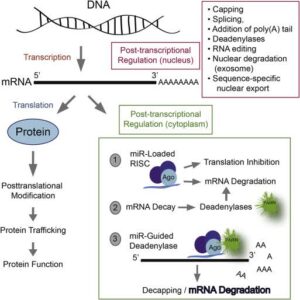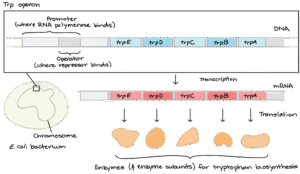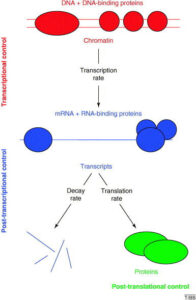Back to: MICROBIOLOGY 500 LEVEL
Welcome to class!
Hello my bright star! It’s always a joy having you here. I hope you’re ready for another exciting learning moment. Today’s topic is one that forms the very core of molecular biology—it’s like understanding the difference between garri and rice. Both are important, but they serve different purposes. We’ll be looking at DNA and RNA—what they are, how they’re built, and what they do. You’re going to love how simple and practical this gets!
Dna Vs. Rna: Structure And Function
Let’s start with a quick scene: Imagine you’re in a big Nigerian organisation—say, a tech company in Abuja. DNA is like the CEO who holds all the key information but doesn’t leave the office. RNA is like the personal assistant—always moving around, taking instructions from the CEO to the workers on the ground (ribosomes). This is how our cells work too!

What is DNA?
DNA stands for Deoxyribonucleic Acid. It’s the molecule that stores all your genetic information—the blueprint for everything about you: your height, your blood type, even how your immune system fights malaria.
Structure of DNA:
It has a double helix shape (like a twisted ladder).
It is made of nucleotides—each with a sugar (deoxyribose), phosphate group, and one of four bases: Adenine (A), Thymine (T), Guanine (G), and Cytosine (C).
DNA bases pair in a very specific way: A with T, and G with C.
Function of DNA:
Stores genetic instructions.
Passes traits from parents to children.
Controls all cell activities by giving instructions for making proteins.
What is RNA?
RNA stands for Ribonucleic Acid. It helps carry out the instructions stored in DNA. Think of RNA as the messenger, the translator, and the worker—all in one.
Structure of RNA:
RNA is single-stranded (unlike DNA’s double helix).
It also has nucleotides, but the sugar is ribose, not deoxyribose.

Instead of Thymine (T), RNA uses Uracil (U). So, A pairs with U, and G pairs with C.
Function of RNA:
There are different types of RNA, and they each have unique jobs:
mRNA (Messenger RNA): Carries genetic code from DNA to ribosomes.
tRNA (Transfer RNA): Brings amino acids to the ribosome for protein making.
rRNA (Ribosomal RNA): Helps form the structure of ribosomes.

Understanding these two molecules is like understanding the management and staff of a business—they work together but have different roles. Without DNA’s instructions, nothing would happen. Without RNA to carry out the instructions, those instructions would just sit there unused!
Summary
- DNA stores genetic information and has a double-stranded helix structure with the sugar deoxyribose and bases A, T, G, C.
- RNA helps in making proteins, is single-stranded, uses ribose, and replaces T with U.
- DNA stays mostly in the nucleus, while RNA moves between the nucleus and cytoplasm to help carry out the DNA’s instructions.
Evaluation
- List two structural differences between DNA and RNA.
- What is the function of mRNA in the cell?
- Which base is found in RNA but not in DNA?
Fantastic work today, champ! You’re learning the language of life—one molecule at a time. Remember, DNA and RNA are the silent powerhouses behind every cell in your body. You’ve taken another step closer to becoming the microbiologist the world needs. Keep your energy up—Afrilearn is right here with you, every step of the way. See you in the next lesson!
